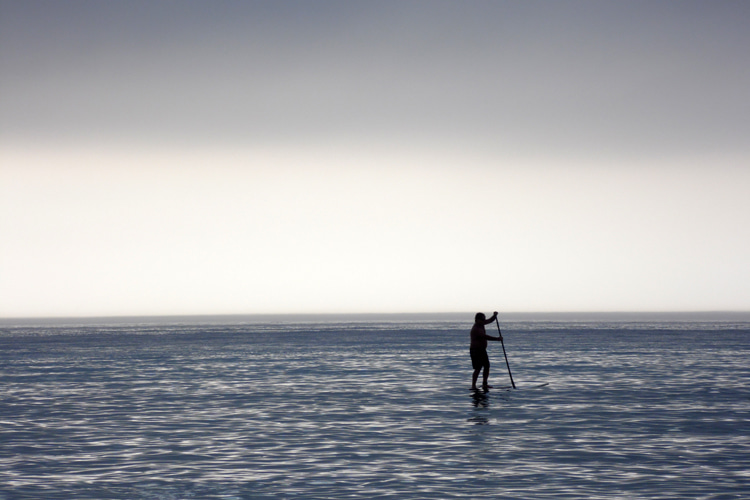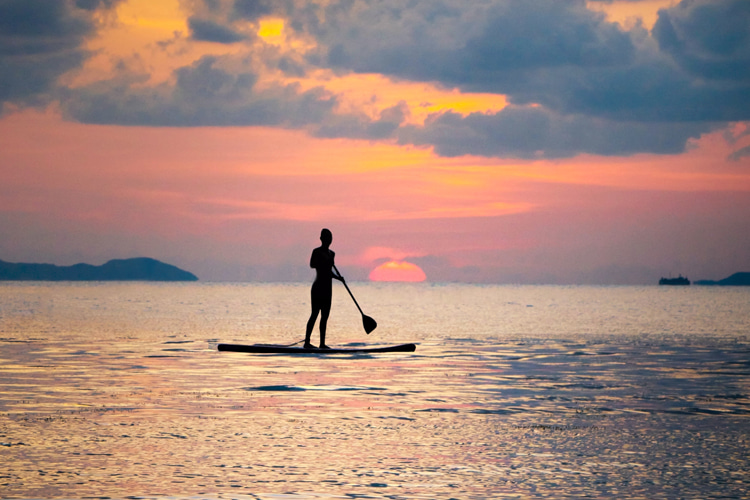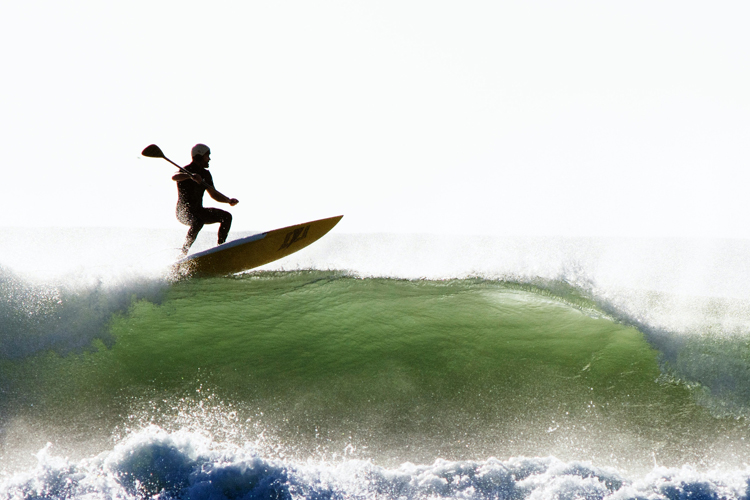Evidencing a meteoric rise in popularity, stand-up paddleboarding (SUP) is swiftly carving out a niche as a go-to watersport.
With a vast array of options, from inflatable to hardshell paddleboards, this aquatic pastime promises not only an enjoyable day out on the water but also an exceptional workout.
Regular paddleboarding can significantly enhance overall fitness, particularly honing in on the core muscles that form the basis for powerful paddle strokes.
Whether a first-time novice or an experienced SUP aficionado, knowing a handful of essential tips can vastly improve your paddleboarding experience.
Perhaps the most invaluable strategy for honing your skills is to participate in a lesson.
Under the guidance of seasoned experts, you will be privy to vital techniques, tips to recover from a fall and deeper insight into understanding environmental elements like wind patterns and tidal behavior.
This foundational knowledge serves as an indispensable tool for all your future paddling endeavors.
The truth is that lifeguards and lifeboat crews are witnessing an exponential rise in SUP incidents.
The Royal National Lifeboat Institution (RNLI), in collaboration with various training agencies, curated several key recommendations that should be part of every paddleboarding trip:

Monitor the Weather Forecast
Before embarking on your paddleboarding expedition, it's crucial to review the weather forecast.
Changes in the weather, especially wind speed and direction, can greatly influence your paddling experience.
Be aware of the tide times, and ensure that the water isn't too choppy, particularly if you're a beginner.
Remember that weather and sea conditions can change rapidly and unpredictably, making it potentially hazardous for paddleboarders.
If the forecast hints at adverse conditions or you're in doubt, it's best to reschedule your trip.
Safe paddleboarding relies on the understanding that nature is in control, and respecting that is paramount to a successful and enjoyable outing.
Inspect Your Equipment
Before setting out, a thorough check of your paddleboarding equipment is crucial. Ensure that your SUP is in top condition, with no leaks or punctures.
The fins should be securely fastened and free from damage, and your paddle should be sturdy and undamaged.
If using an inflatable SUP, make sure it's properly inflated.
Regular checks and maintenance will not only extend the life of your equipment but will also contribute significantly to your safety and enjoyment while on the water.
Faulty equipment can lead to potentially dangerous situations, so it's essential to make sure everything is in order before venturing out.

Never Paddle Alone
Although stand-up paddleboarding can seem like a peaceful solo activity, it's safer and more enjoyable when done in pairs or groups.
Having a paddling partner or companions means there's someone to lend a hand or summon help should you encounter any difficulties.
Plus, shared experiences often enhance the enjoyment of the activity.
In the event that you do choose to paddle alone, ensure someone on shore knows your plans, including where you'll be paddling and when you expect to return.
Having a system of accountability adds another layer of safety to your paddleboarding adventures.
Wear a Buoyancy Aid
Regarded as a type of Personal Flotation Device (PFD), a buoyancy aid provides additional buoyancy in the water, bolstering your floatation and offering you ample time to recover should you accidentally take a tumble.
Since they come in various sizes, it's imperative to select one that fits you correctly to assist in reboarding, a challenge many beginners face.
Consider the weight range and chest size when purchasing a buoyancy aid, and ensure it provides comfort and unrestricted movement for unhindered paddling.

Carry a Phone in a Waterproof Pouch
While it's handy for capturing memorable moments of your paddleboarding adventure, a mobile phone is also your lifeline in case of an emergency.
Keep it accessible in your buoyancy aid pocket or around your neck. It's useless if stashed away in a dry bag attached to your board.
In case of coastal emergencies, dial your local emergency number (for instance, 999 or 112) or reach out to the Fire & Rescue service.
Use the Appropriate Leash
Nothing can be more vexing than having to swim after your board post-fall.
Moreover, a leash helps you stay tethered to your board if you face difficulties, thereby aiding floatation.
Choose the right leash based on your paddling environment.
While most boards include an ankle leash, it might not suit your intended paddleboarding area.
For tidal or flowing waters like rivers with entrapment or obstruction risks, opt for a quick-release waist leash.
Steer Clear of Offshore Winds
Winds sweeping from the beach or shore towards the sea are termed offshore winds.
Despite making the water appear calm and inviting, they can be treacherously deceptive, blowing you and your paddleboard far out to sea and making the return paddle an exhausting struggle.
On a lifeguarded beach, watch the orange windsock to gauge the wind direction.
Extra Tips
In addition to these foundational tips, here are some other measures to ensure a safer SUP journey:
- Take a Lesson: Enhance your knowledge and skills for a more pleasant future SUP experience;
- Know Your Environment: Understand the location-specific risks and adjust your equipment accordingly. Comprehending local tidal currents can prevent rapid fatigue and unpredictable paddling difficulties;
- Remember the "Float to Live" Rule: If you unexpectedly fall into the water or lose your board, float on your back;
- Communicate Your Plan: Inform someone of your intended location and return time. Always carry a mobile phone or communication device;
- Dress Appropriately: Wear suitable clothing for the season. In winter, opt for a wet or dry suit. In summer, despite warmer temperatures, the water may be cold enough to induce a shock, so consider wearing a wetsuit;
- Talk to locals: Get advice and suggestions on where to go and not to go. Local water sports enthusiasts know the tricks and hidden dangers of the area where you're riding better than anyone else;
- Respect the Beach Flags and Rights of Way: On lifeguarded beaches, launch and land between the black and white chequered flags to avoid swimmers;
- Follow the Water Rules: Learn and adhere to surf etiquette and right-of-way rules to prevent accidents;
Embracing these tips will help you paddleboard safely, allowing you to revel in the sport's inherent joy and fitness benefits.
